Seaweeds of the South African South Coast


Order Ceramiales
Family Ceramiaceae
Centroceras spp (ex “clavulatum”)
For reasons explained below (see note) we describe only specimens that were previously identified in South Africa as C. clavulatum. This description is based on Stegenga et al. (1997).
Plants up to 10 cm tall, usually smaller, bushy, dark red to almost black, consisting of many erect or partly creeping filaments, attached by several multicellular rhizoids from periaxial cells of lower segments. Plants almost dichotomously branched, with (8-)10-14(-18) segments between ramifications. Apices strongly incurved, at first the segments shorter than broad, in mature sections the segments longer than broad. Segments consisting of one big cylindrical central cell, an apical ring of 14-18(-20) periaxial cells, each of which produces three initials: 1 apical, remaining very limited in development, 1 basal, developing a cell row in basal direction, and 1 lateral, developing both a short acropetal and a long basipetal cell row. Long cell rows covering the whole of the underlying cell. Spine cells present in varying numbers, from none in plants from sheltered environment (Knysna Lagoon) to one per periaxial cell in more exposed specimens, originating from the acropetal filaments. Segments up to ca. 200 µm, up to 5 times as long as broad.
Tetrasporangia singly on the periaxial cells, at first on the “outside” of branches, later on virtually every periaxial cell per segment, completely exposed. Sporangia on the apical parts of the filaments, but also frequently on (two) adventitious branchlets, in the axils of normal branches (or rather at right angles to them). Tetrasporangia measuring ca. 70 x 55 µm at maturity, tetrahedrally divided. Spermatangia in whorls on the top of young segments, forming a closed ring ca. 25-30 µm high, individual spermatangia very small, ca. 3 µm tall. Carposporophytes with a few corticated involucral filaments, but not completely enclosed. Description based on numerous collections, covering the south coast between Still Bay and Mkambathi. See note below.
Collections, ecology and regional distribution
A common species (complex?) over the whole South African coast, from the lower intertidal to the sublittoral.
Note: Five species are now known to occur in South Africa (see Won et al. 2009, Won et al. 2010), but their distributions (other than type localities) are unknown (see note under genus Centroceras). For proper identification of South African Centroceras species, refer to Won et al. (2009) and Won et al. (2010), and particularly to the key to South African species in the latter publication.
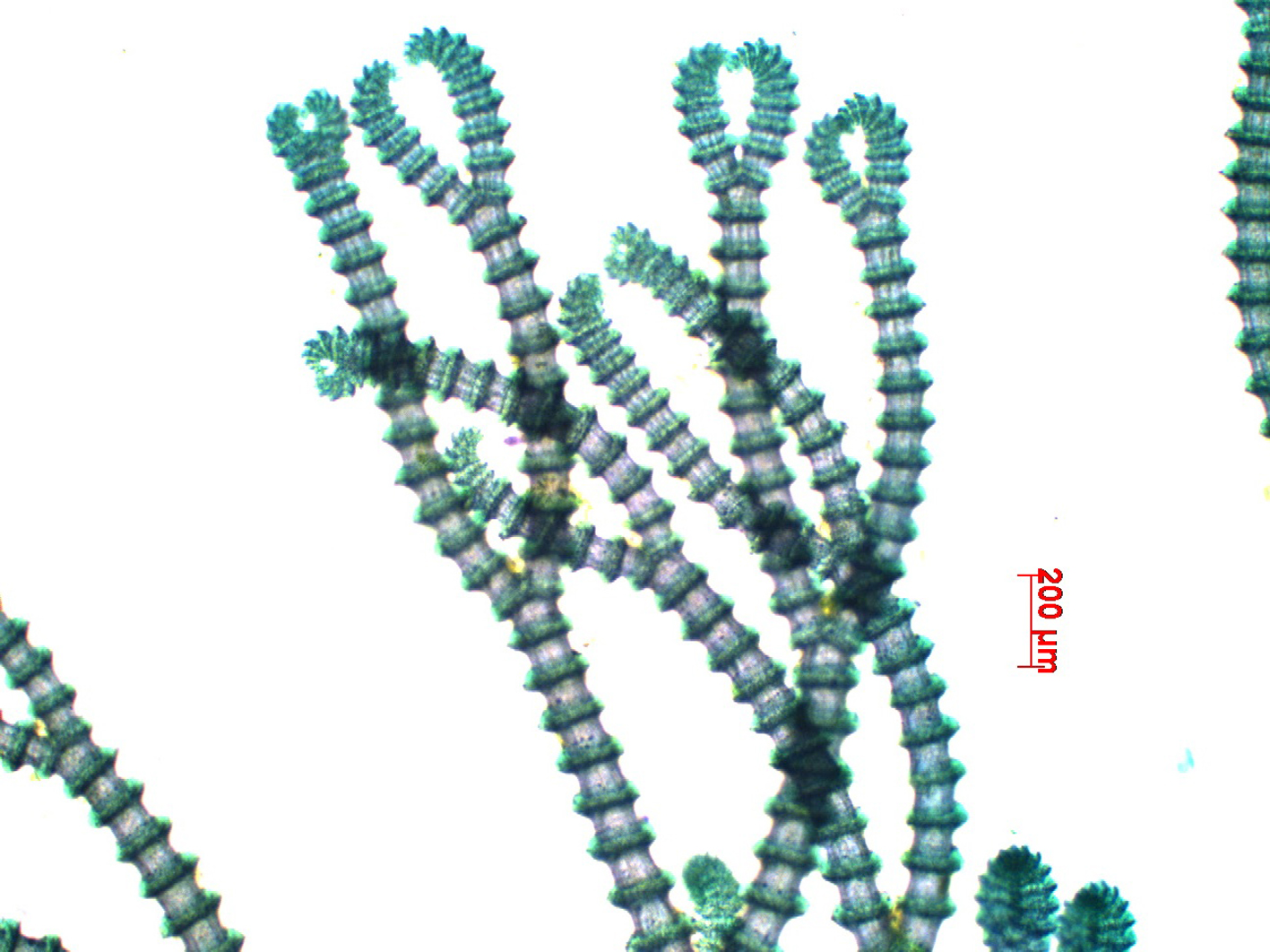
Centroceras sp. Habit, male plant. (Stained slide, Goukamma).
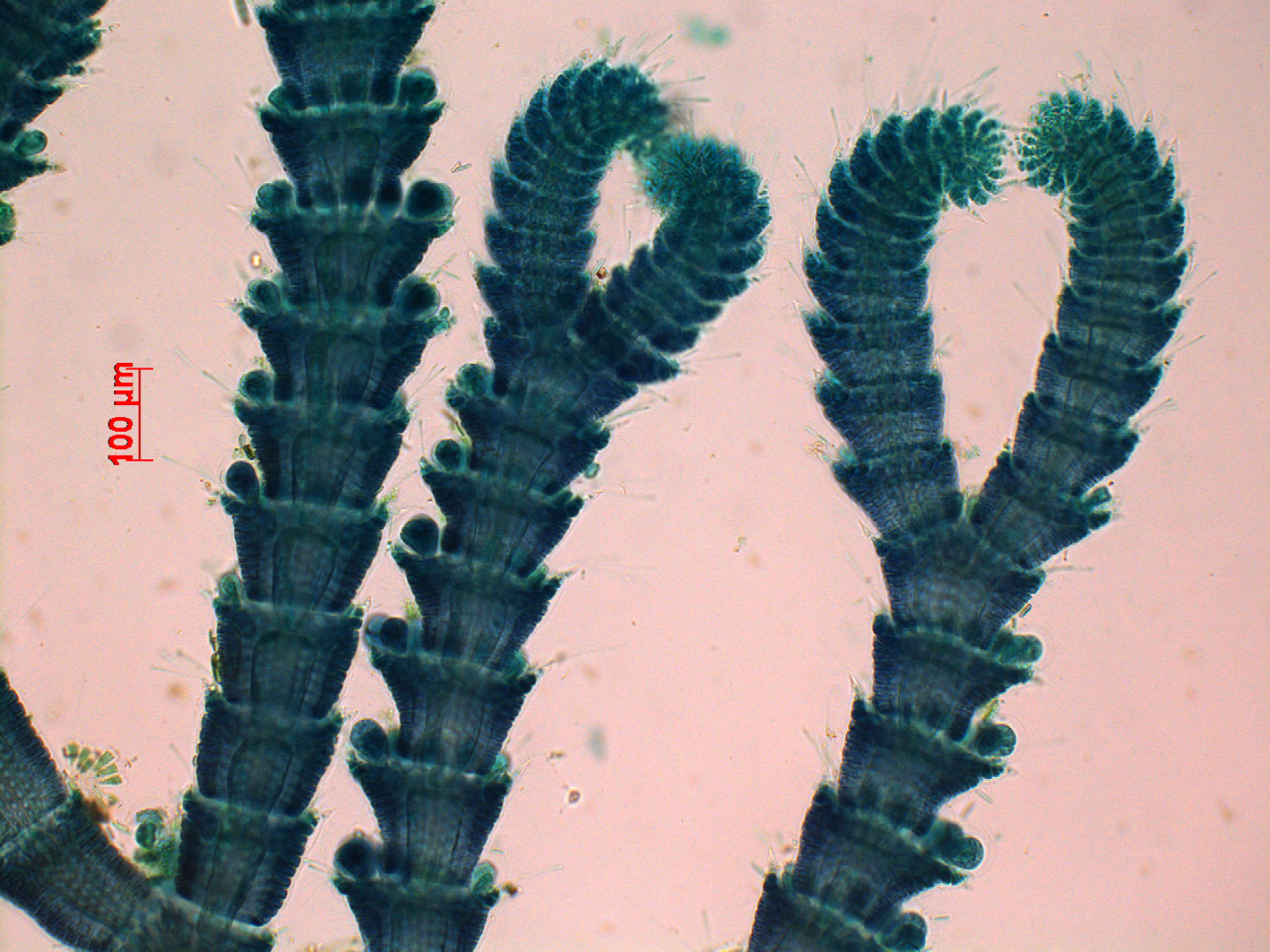
Centroceras sp. Tetrasporangial. Stained slide, Kei Mouth.
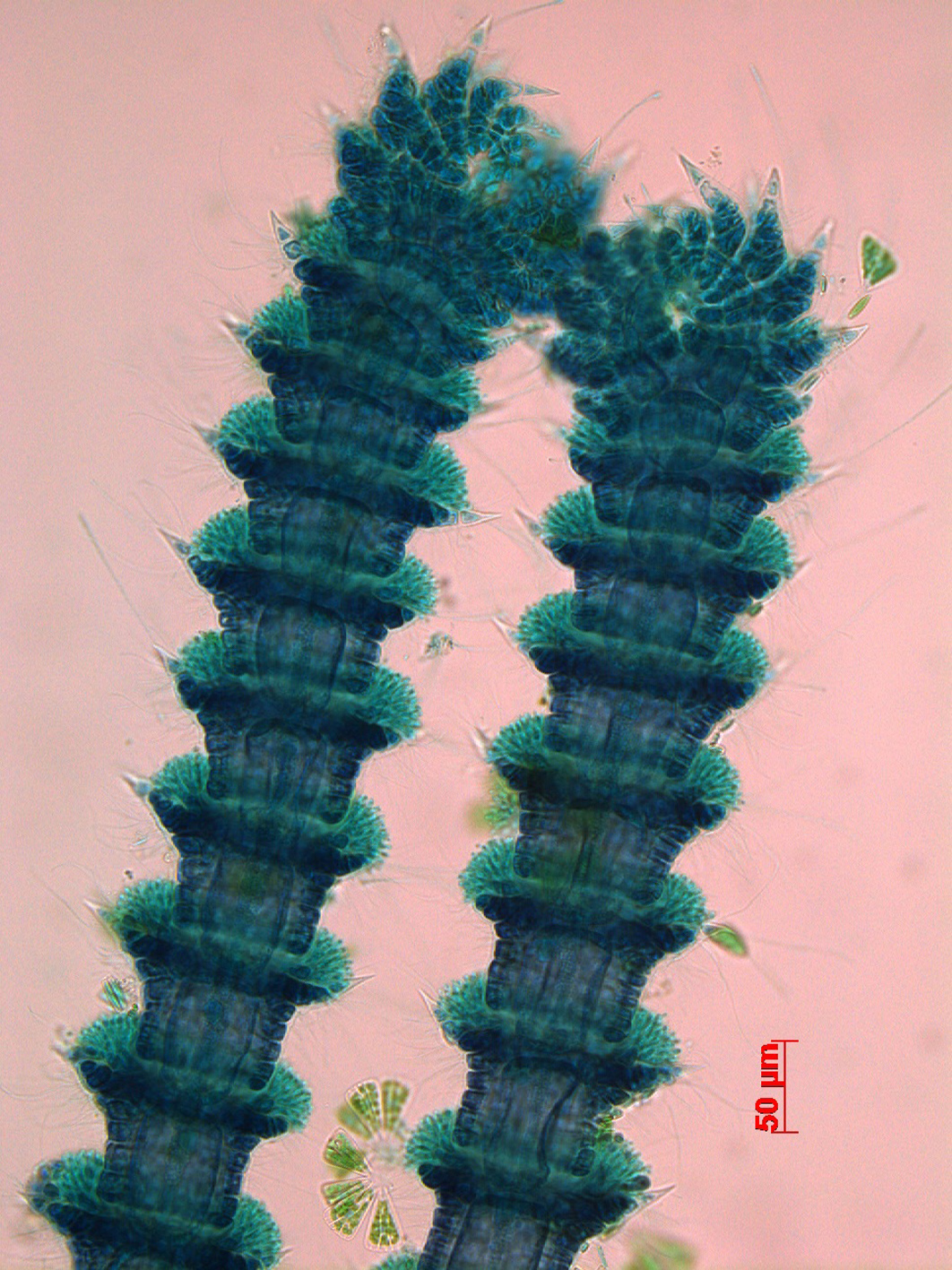
Centroceras sp. Male plant. (Stained slide, Goukamma).
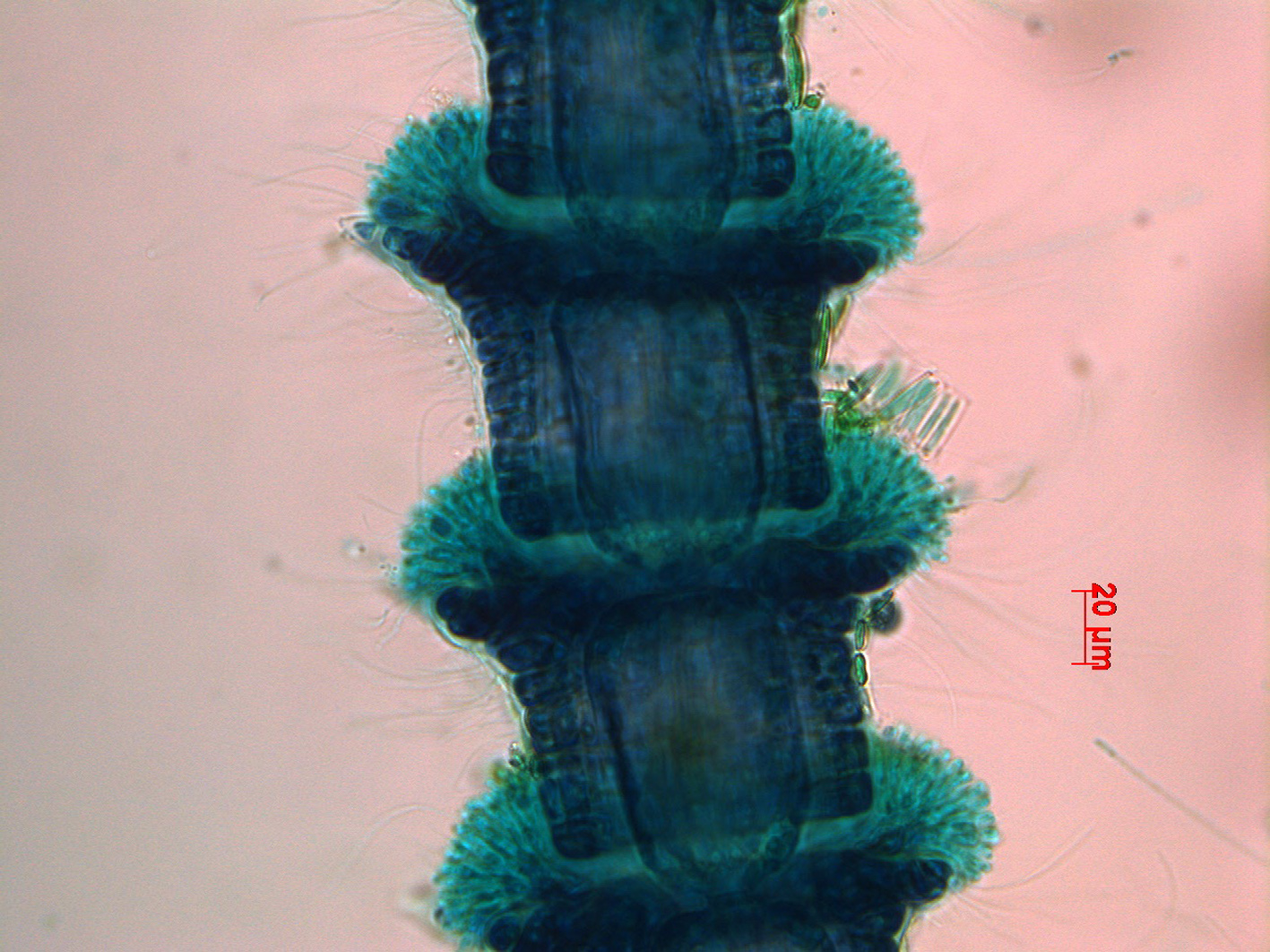
Centroceras sp. Detail of spermatangial stands on male plant. (Stained slide, Goukamma).
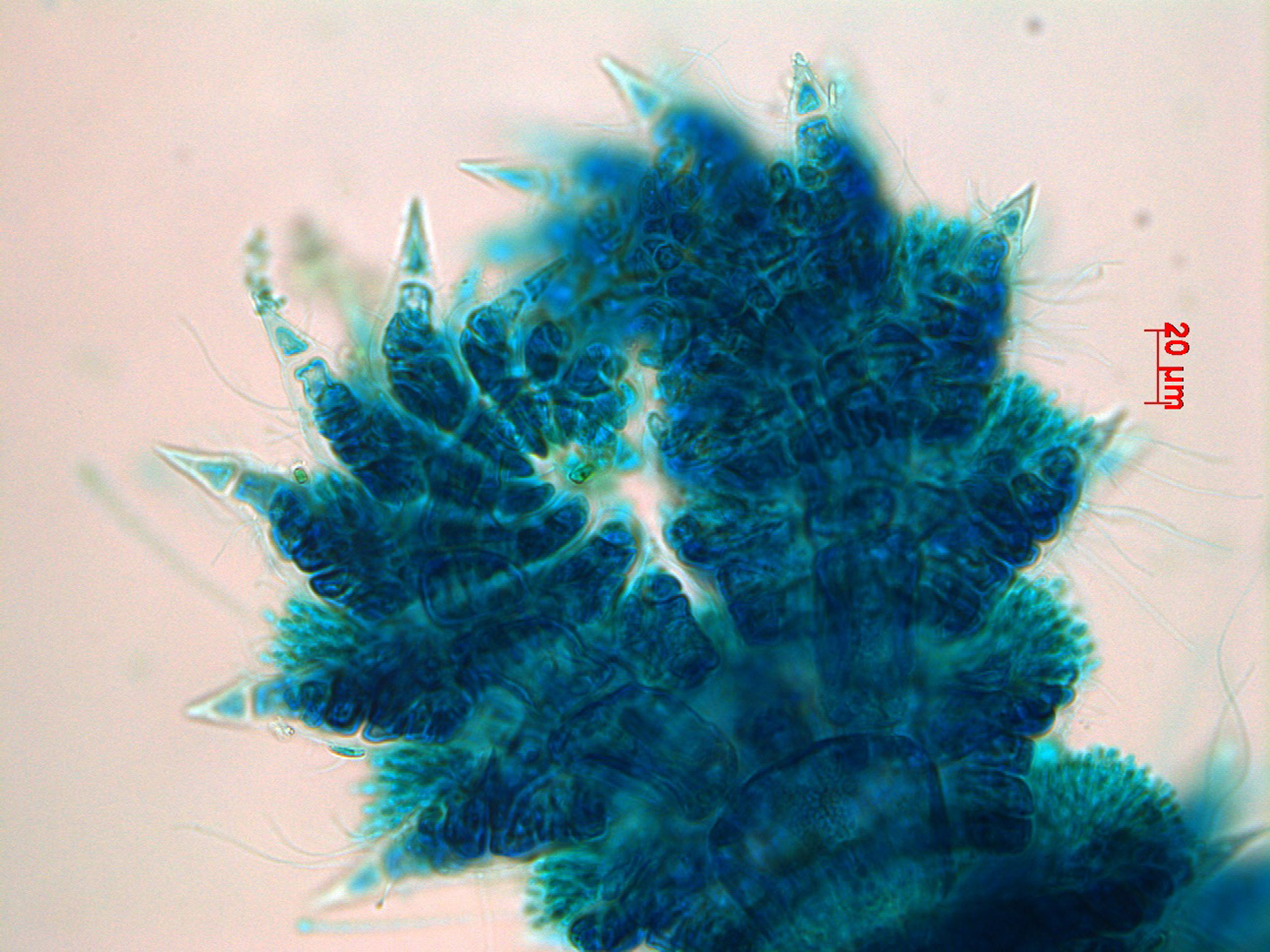
Centroceras sp. Apex of male plant. (Stained slide, Goukamma).
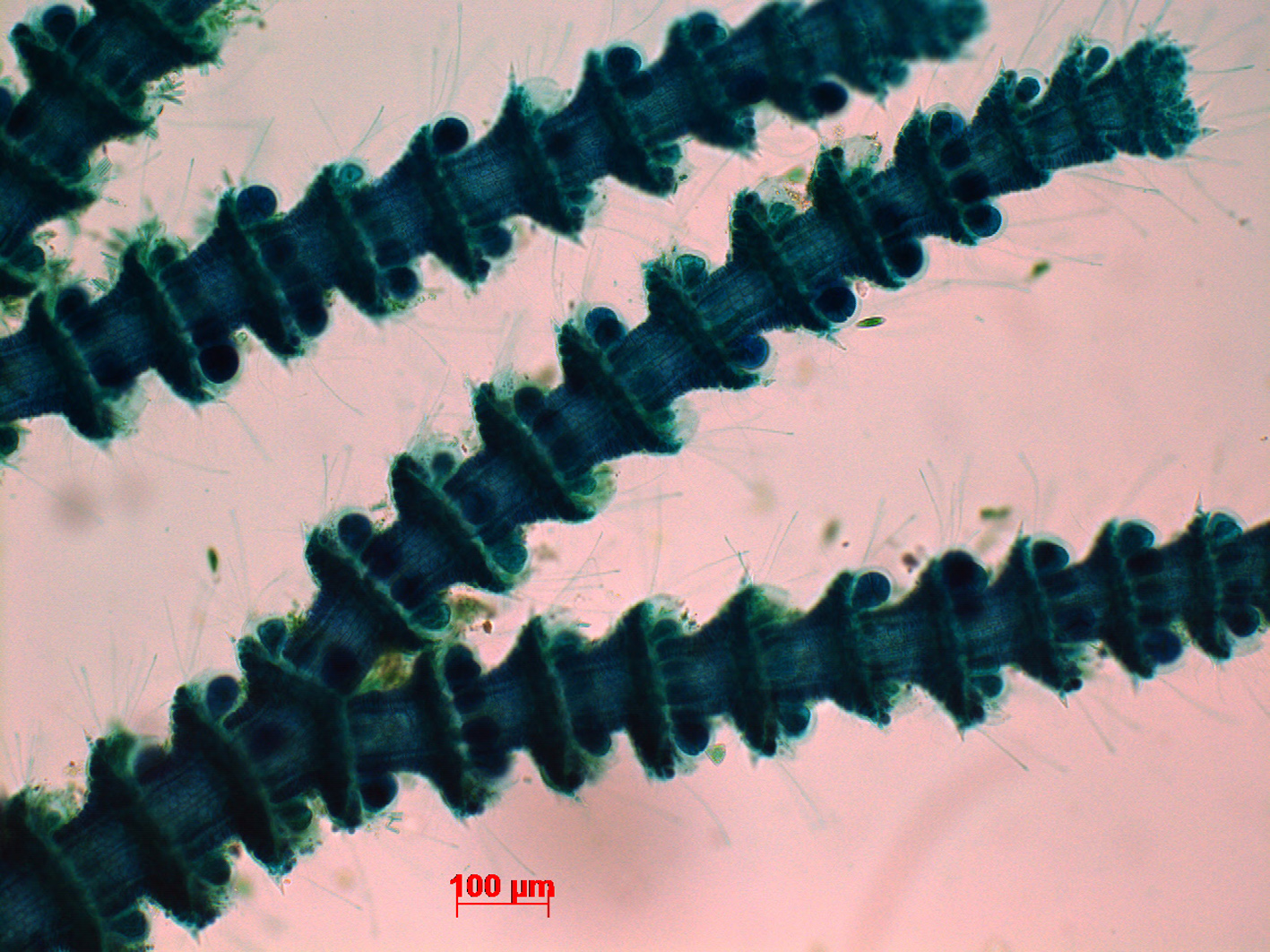
Centroceras sp. Tetrasporangial plant. (Stained slide, Goukamma).
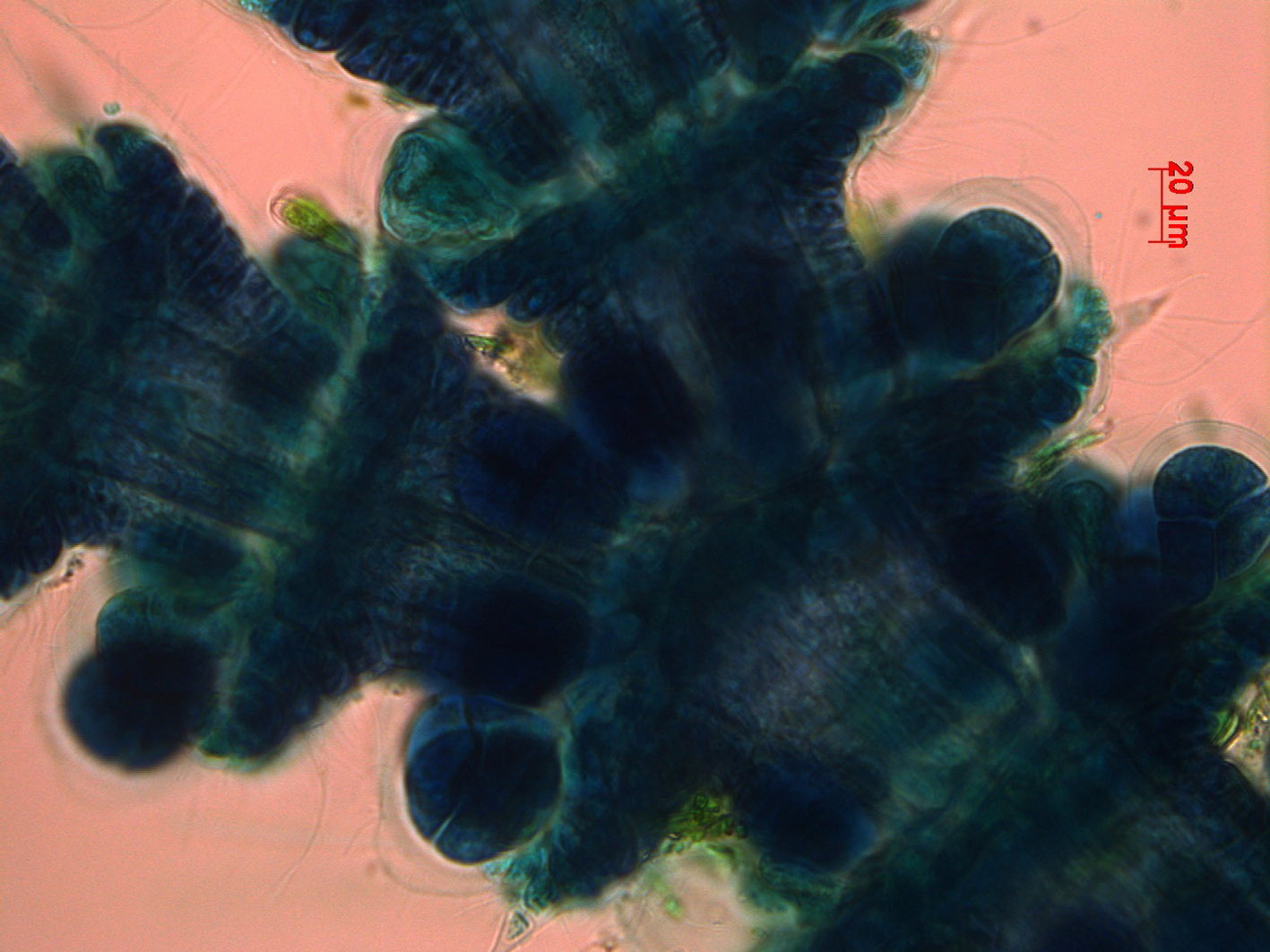
Centroceras sp. Detail of tetrasporangia. (Stained slide, Goukamma).
References Centroceras “clavulatum”
Stegenga, H., Bolton, J.J. and R. J. Anderson. 1997. Seaweeds of the South African west coast. Contributions from the Bolus Herbarium 18: 655 pp.
Won, B.Y., Cho, T.O. & Fredericq, S. 2009. Morphological and molecular characterization of species of the genus Centroceras (Ceramiaceae, Ceramiales), including two new species. Journal of Phycology 45: 227-250.
Won, B.Y., Fredericq, S. & Cho, T.O. 2010. Two new species of Centroceras (Ceramiaceae, Rhodophyta) from KwaZulu-Natal, South Africa. European Journal of Phycology 45(3): 240-246.
Cite this record as:
Anderson RJ, Stegenga H, Bolton JJ. 2016. Seaweeds of the South African South Coast.
World Wide Web electronic publication, University of Cape Town, http://southafrseaweeds.uct.ac.za; Accessed on 15 December 2025.